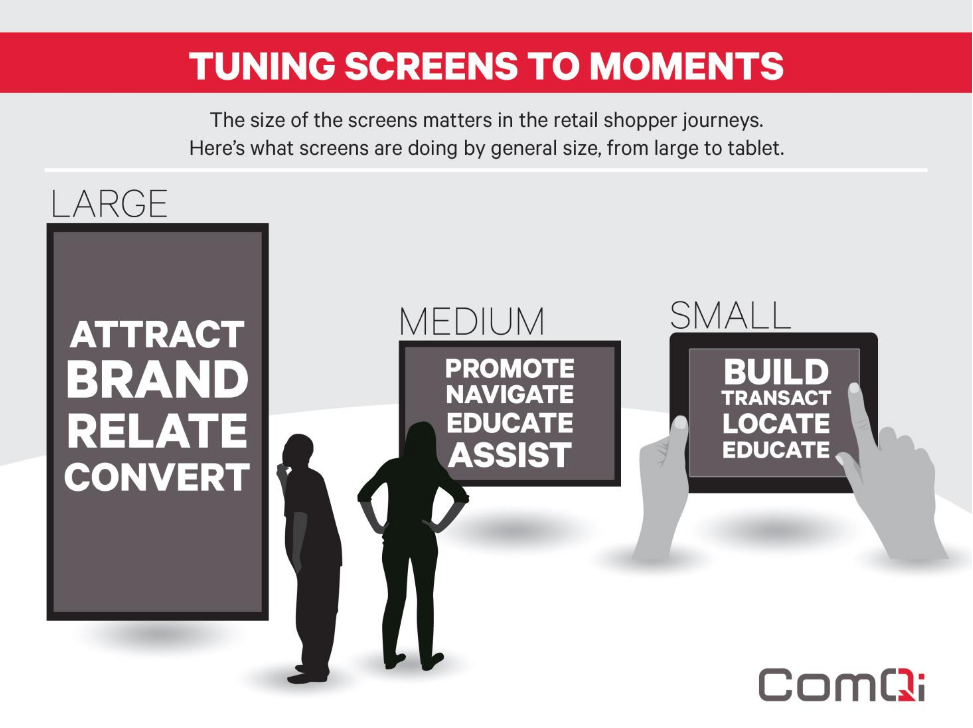
Size Matters In Digital Signage
August 18, 2016 by guest author, Jeff Doud

Guest Post: Stuart Armstrong, ComQi
To get the most out digital signage in retail settings, keep two key words in mind: Size Matters.

Stuart Armstrong
That doesn’t mean bigger is better. What matters is using screen sizes that suit the setting, dynamics and purpose.
The display side of the digital signage business understandably focuses on screens that seem to just keep getting bigger. They’re amazing, and very powerful marketing tools for certain jobs. But there are times when diminutive 10-inch or 22-inch LCD displays are better, more logical and effective options than those using much larger screens.
Walk into most retail environments and you will see digital displays somewhere in the store, installed for a variety of purposes.
Retailers are using screens to drive communications with shoppers – anything from what’s on sale and what’s new on shelves and racks, to more tactical work like helping direct foot traffic and managing line-ups at check-out.
Just like print material, displays create awareness and can have a direct correlation to sales performance. The difference with digital is agility – print takes days and weeks to execute. Prices and promotions using digital signs take a few keystrokes, and more sophisticated systems can largely automate what shoppers see, location by location. Done right, a SKU that sells out then automatically disappears off digital display promotions.
Large screens and clusters of displays made into video walls are used by many retailers as the signature design features in stores. Those high-impact displays are in place to reinforce the brand and make statements that ideally connect emotionally with shoppers.
Smaller displays – all the way down to tablet-sized screens – are there to make the shopper journey faster, easier and most importantly, better.
Start With Objectives
Every screen plugged in and powered up in a retail environment should have a clear purpose and objectives. Putting screens in stores is not, in itself, an objective. That’s just a tactic.
I can understand how some retailers have been disappointed by the signage projects they’ve had put in, when the displays were just positioned where there was room. You’re trying to establish what those consumers are attempting to do, and then respond to that with relevant messaging at relevant moments.
In-store digital messaging really starts to work when what’s done reflects a lot of solid thinking in the planning stages of these projects.
This post is an excerpt from a broader position paper by ComQi on retail digital signage. You can read or download the full paper here.



Leave a comment